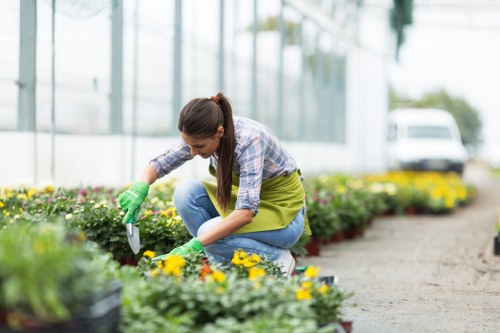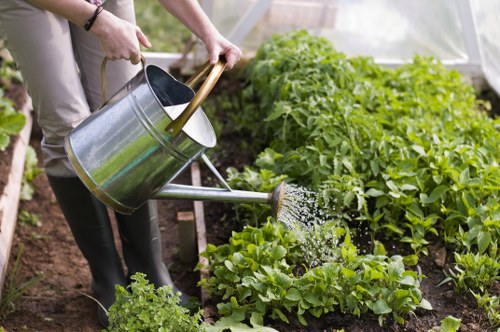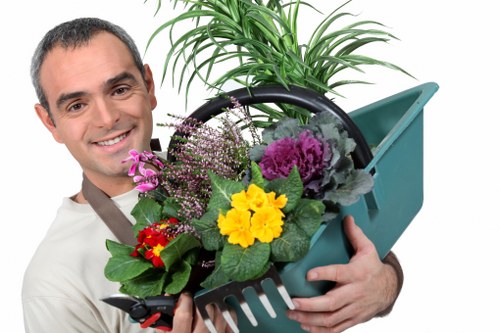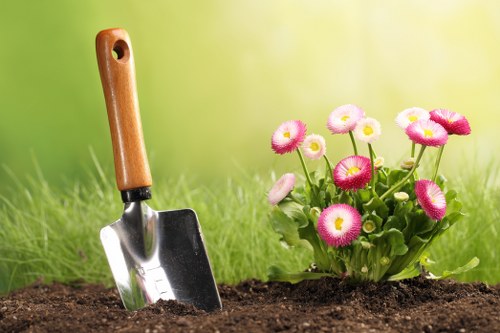Landscape Gardening in Victoria: Transforming Outdoor Spaces

Introduction to Landscape Gardening in Victoria
Victoria, renowned for its diverse climate and stunning natural landscapes, offers a unique canvas for landscape gardening enthusiasts. Whether you're looking to create a serene backyard retreat or a vibrant public garden, understanding the local conditions and gardening practices is essential for success.
Landscape gardening in Victoria involves a blend of aesthetic design, environmental considerations, and practical maintenance strategies. By leveraging native plants and sustainable practices, gardeners can create beautiful, resilient landscapes that thrive in the region's specific climate.
In this comprehensive guide, we will explore the key elements of landscape gardening in Victoria, including plant selection, design principles, soil management, and seasonal care tips to help you achieve a stunning outdoor space.

Understanding Victoria's Climate and Its Impact on Gardening
Victoria's climate varies significantly from coastal areas to inland regions, influencing the types of plants that can thrive. The state generally experiences a temperate climate, with moderate rainfall and distinct seasons, making it suitable for a wide range of gardening activities.
Key Climate Zones in Victoria:
- Coastal Areas: Mild temperatures with higher humidity and more consistent rainfall.
- Inland Regions: Hot summers and cooler winters, with less rainfall compared to coastal zones.
- Highland Areas: Cooler temperatures year-round and increased precipitation.
Understanding these climate zones helps gardeners select appropriate plant species and design landscapes that can withstand local weather patterns, ensuring longevity and minimal maintenance.

Choosing the Right Plants for Your Victorian Garden
Selecting the right plants is crucial for a successful landscape garden in Victoria. Opting for native and drought-resistant species not only enhances the garden's beauty but also promotes environmental sustainability.
Popular Plant Choices:
- Eucalyptus: A versatile evergreen that provides shade and attracts wildlife.
- Lavender: Known for its fragrant blooms and ability to thrive in sunny, well-drained areas.
- Grevillea: Offers vibrant flowers and is a favorite among local pollinators.
- Acacia: Provides a striking architectural element with its unique foliage and blossoms.
- Banksia: An iconic Australian native that adds texture and color to any garden.
By incorporating a mix of these plants, gardeners can create diverse and resilient landscapes that require less water and are better suited to Victoria's climate.

Design Principles for Effective Landscape Gardening
Effective landscape gardening combines functionality with aesthetic appeal. Here are some essential design principles to consider:
1. Balance and Symmetry
Creating a balanced layout ensures that the garden feels harmonious. Symmetrical designs can provide a formal look, while asymmetrical arrangements offer a more natural, organic feel.
2. Focal Points
Incorporating focal points, such as a water feature, sculpture, or a striking plant, draws attention and adds interest to the garden.
3. Layering and Depth
Layering plants of varying heights and textures adds depth and dimension, making the garden more visually appealing.
4. Pathways and Access
Well-designed pathways guide visitors through the garden and provide easy access to different areas, improving the overall functionality.
5. Sustainable Practices
Implementing sustainable practices, such as rainwater harvesting, composting, and using native plants, promotes environmental stewardship and reduces maintenance efforts.

Soil Management and Fertilization
Healthy soil is the foundation of a thriving garden. In Victoria, it's essential to assess and improve soil quality to support plant growth.
Soil Testing
Conducting a soil test helps determine pH levels and nutrient content, guiding appropriate amendments and fertilization strategies.
Amending the Soil
Add organic matter, such as compost or well-rotted manure, to improve soil structure, drainage, and fertility.
Fertilization
Use balanced fertilizers tailored to the specific needs of your plants. Avoid over-fertilizing, which can lead to nutrient runoff and environmental issues.
Tips for Maintaining Healthy Soil:
- Practice crop rotation and plant diversity.
- Mulch regularly to retain moisture and suppress weeds.
- Incorporate cover crops during off-seasons.
Proper soil management ensures that plants receive the necessary nutrients, promoting robust growth and reducing susceptibility to pests and diseases.

Water Management Strategies
Efficient water management is critical in Victoria's varying climate. Implementing strategies to conserve water not only benefits the environment but also reduces gardening costs.
1. Drip Irrigation
Drip irrigation delivers water directly to the plant roots, minimizing evaporation and runoff, and ensuring efficient water usage.
2. Rain Gardens
Rain gardens capture and filter rainwater, reducing stormwater runoff and providing a habitat for beneficial insects and wildlife.
3. Xeriscaping
Xeriscaping involves designing landscapes that require minimal water by using drought-resistant plants and efficient irrigation systems.
4. Mulching
Applying mulch helps retain soil moisture, regulate soil temperature, and control weed growth.
Implementing Sustainable Water Practices:
- Collect and store rainwater for irrigation.
- Choose native plants that are adapted to local moisture levels.
- Monitor and adjust irrigation schedules based on weather conditions.
Adopting these water management strategies ensures a sustainable and resilient garden that can thrive even during dry spells.

Seasonal Care and Maintenance
Understanding and adapting to Victoria's seasons is vital for maintaining a healthy and vibrant garden throughout the year.
Spring:
Spring is ideal for planting new shrubs, perennials, and annuals. It's also a good time to prepare garden beds by adding compost and mulch.
Summer:
Focus on watering, weeding, and pruning to keep plants healthy during the hot months. Implement shading techniques for sensitive species.
Autumn:
Planting bulbs, dividing perennials, and preparing the garden for winter are key activities. Clean up fallen leaves and debris to prevent pests.
Winter:
Protect delicate plants from frost, prune dormant trees and shrubs, and plan for the upcoming gardening season.
Maintenance Tips:
- Regularly check for pests and diseases.
- Maintain garden tools and equipment.
- Rotate crops to promote soil health.
Consistent seasonal care ensures that your garden remains healthy, beautiful, and productive year-round.

Incorporating Hardscape Elements
Hardscape elements complement the softscape of plants and add functionality and visual interest to your landscape garden.
Popular Hardscape Features:
- Patios and Decks: Provide space for outdoor seating and entertaining.
- Paths and Walkways: Guide visitors through the garden and define different areas.
- Water Features: Enhance the ambiance with ponds, fountains, or waterfalls.
- Retaining Walls: Support garden structures and prevent soil erosion.
- Outdoor Lighting: Extend the usability of your garden into the evening and highlight key features.
Integrating these hardscape elements thoughtfully can elevate the overall design and functionality of your landscape garden in Victoria.

Choosing the Right Garden Design Style
Victoria's versatile landscape allows for various garden design styles. Selecting a style that resonates with your personal preferences and complements your home's architecture is essential.
Popular Garden Design Styles:
- Modern: Clean lines, minimalistic elements, and a focus on structure.
- Australian Native: Emphasizes native plants and natural landscapes.
- Japanese: Incorporates elements like koi ponds, bamboo, and carefully pruned plants.
- Traditional: Classic designs with symmetrical layouts and structured plantings.
- Coastal: Light, airy designs with an emphasis on beach-inspired plants and materials.
Choosing the right design style helps create a cohesive and aesthetically pleasing garden that aligns with your vision and the local environment.

Sustainable Gardening Practices
Sustainable gardening is increasingly important in Victoria, where environmental conservation is a priority. Implementing eco-friendly practices benefits both your garden and the broader ecosystem.
Key Sustainable Practices:
- Composting: Recycle organic waste into nutrient-rich compost for soil amendment.
- Rainwater Harvesting: Collect and store rainwater for irrigation purposes.
- Using Native Plants: Support local biodiversity and reduce water consumption.
- Reducing Chemical Use: Opt for natural pest control methods and organic fertilizers.
- Energy-Efficient Lighting: Use solar-powered or LED lights to minimize energy usage.
Adopting these sustainable gardening practices not only enhances the health of your garden but also contributes to the preservation of Victoria's natural beauty.

Enhancing Your Garden with Wildlife
Creating a wildlife-friendly garden enriches the biodiversity of your landscape and fosters a healthier ecosystem.
Ways to Attract Wildlife:
- Birdhouses and Feeders: Provide shelter and food for various bird species.
- Ponds and Water Features: Attract amphibians, insects, and birds.
- Native Plants: Offer habitat and food for local wildlife.
- Insect Hotels: Create nesting sites for beneficial insects like bees and ladybugs.
- Butterfly Gardens: Plant nectar-rich flowers to support butterflies and other pollinators.
By incorporating these elements, your garden becomes a sanctuary for wildlife, promoting ecological balance and adding dynamic life to your outdoor space.

Professional Landscape Gardening Services in Victoria
While DIY gardening is rewarding, professional landscape gardening services can elevate your garden to the next level. Experts bring experience, creativity, and technical knowledge to design and maintain stunning landscapes.
Benefits of Hiring Professionals:
- Customized Design: Tailored solutions that align with your vision and site-specific conditions.
- Efficient Execution: Streamlined processes and timely completion of projects.
- Expert Maintenance: Ongoing care to ensure your garden remains healthy and beautiful.
- Access to Resources: Professional networks for quality materials and sustainable practices.
- Increased Property Value: A well-designed garden enhances the overall appeal and value of your property.
If you're looking to transform your outdoor space, consider consulting with a professional landscape gardener in Victoria to achieve the garden of your dreams.

Conclusion: Embrace the Beauty of Landscape Gardening in Victoria
Landscape gardening in Victoria offers endless possibilities to create a personalized and sustainable outdoor haven. By understanding the local climate, selecting the right plants, and applying effective design principles, you can transform your garden into a stunning sanctuary.
Whether you're an experienced gardener or just starting, incorporating sustainable practices and professional insights can enhance the beauty and functionality of your landscape. Embrace the art of landscape gardening and enjoy the numerous benefits it brings to your home and the environment.
Ready to transform your outdoor space? Contact us today to consult with our expert landscape gardeners and book your service now!